Hassas Donanım Özel Çözümler Üreticisi
Contents
Auto body sheet metal fabrication and custom auto sheet metal fabrication play a crucial role in the automotive industry, ensuring durability, aerodynamics, and aesthetics. These processes involve bending, forming, welding, and cutting to manufacture custom automotive components.
Shengwo, a precision sheet metal fabrication manufacturer, is accelerating this transformation by replacing traditional manufacturing methods with machine-based automation. These advancements are driving unprecedented growth in the sheet metal industry.
Whether for repair, restoration, or customization, achieving high-quality results in auto body sheet metal fabrication requires precision machining.
By 2033, the global sheet metal market is projected to reach $450 billion. A report from Achrnews highlights the applications of sheet metal fabrication in construction materials, aircraft components, and automotive parts.
As the automotive market expands, the demand for complex components continues to rise. Auto precision sheet metal fabrication manufacturers are integrating the latest technologies to meet this growing need. Shengwo’s custom auto sheet metal fabrication capabilities ensure that your auto body sheet metal fabrication exceeds expectations and meets the highest industry standards.
This article will explore the fundamental processes, materials, and benefits of auto body sheet metal fabrication.
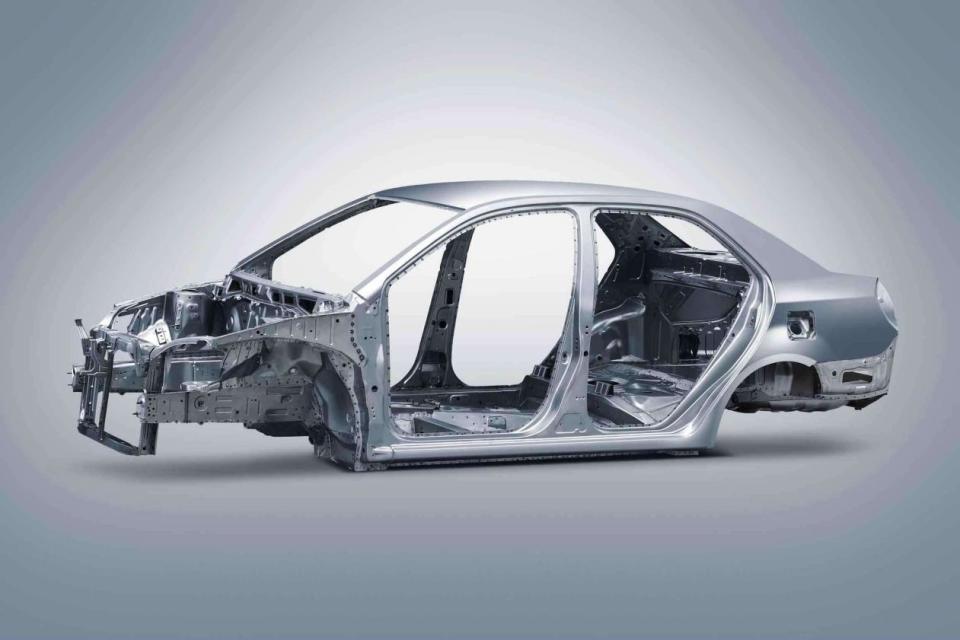
Choosing the right materials is crucial for vehicle performance, safety, and longevity.
Automotive sheet metal are primarily divided into two categories: ferrous metals and non-ferrous metals. Due to performance and cost factors, ferrous metals account for 90% of usage, while non-ferrous metals make up only 10%.
The main materials used in auto body sheet metal fabrication include carbon steel, alloy steel, cast iron, non-ferrous metals and alloys, non-metallic materials, and composite materials.
Among them, steel sheets are the most widely used and fundamental materials. Based on carbon content, steel sheets can be classified into low-carbon steel, medium-carbon steel, and high-carbon steel:
Low-carbon steel: Carbon content < 0.25%
Medium-carbon steel: Carbon content between 0.25% and 0.6%
High-carbon steel: Carbon content > 0.6%
Most of the base materials used in auto precision sheet metal fabrication manufacturing are steel sheets, with galvanized steel being the preferred choice due to its enhanced performance. Galvanization is mainly done through two methods: hot-dip galvanizing and electro-galvanizing.
Electro-galvanized steel (SECC): Uniform gray color, mostly imported, fingerprint-resistant, excellent corrosion resistance, and retains the workability of cold-rolled sheets.
Hot-dip galvanized steel (SGCC): Bright white with small zinc spangles, although large zinc spangles are more easily identifiable with hexagonal patterns.
Electro-galvanized steel has a thinner coating compared to hot-dip galvanized steel.
DX51D+Z—DX57D+Z; DC51D+Z—DC57D+Z
D: Cold-formed flat steel
X: Hot-rolled process
C: Cold-rolled process
51-57: The higher the number, the better the stamping performance
D: Galvanized
Z: Pure zinc coating
H300LAD+Z: Low-alloy high-strength steel
H340LAD+Z: Cold-formed high-strength steel
H380LAD+Z: Galvanized coil
22MnB5: Pickled hot-formed high-strength steel
Different parts of the vehicle require different base materials depending on their functional demands:
Side panels, as the largest stamped parts in the vehicle body system, typically use DX54D+Z, with yield strength ranging from 280-340 MPa.
Door impact beams, reinforcement plates, and windshield pillar reinforcement plates, which require a combination of high strength and good toughness for safety purposes, often use 22MnB5, with yield strength between 560-690 MPa.
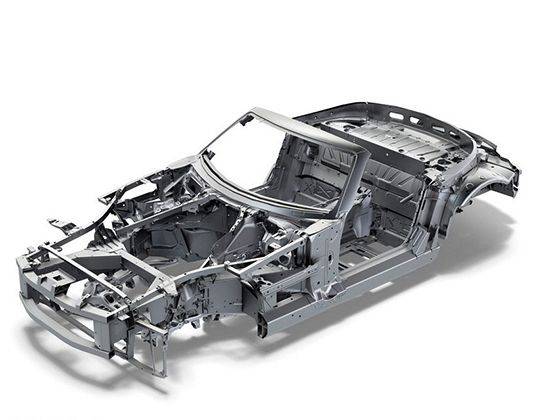
Auto body sheet metal fabrication involves cutting, forming, and assembling metal sheets to create or repair vehicle body panels. This process requires specialized equipment, skilled craftsmanship, and high-precision CNC machining services to ensure durability and accuracy.
One of the most significant advantages of sheet metal fabrication is its design flexibility. Modern automotive designs demand sleek lines, aerodynamic shapes, and complex geometries, all of which can be achieved through sheet metal forming processes. With advanced manufacturing technologies like CNC machining and laser cutting, manufacturers can precisely produce body panels, hoods, doors, and chassis components. This flexibility allows for customization and innovation, helping automakers stand out in a highly competitive market.
Sheet metal fabrication offers the ability to work with various metals, each providing specific properties to meet different automotive requirements. Common materials include:
Aluminum – Lightweight and enhances fuel efficiency.
Stainless steel – Corrosion-resistant for durability.
Galvanized steel – Provides additional weather resistance.
By selecting the right material, manufacturers can balance weight, strength, and cost, ensuring optimal performance for different vehicle components.
CNC machining and advanced manufacturing techniques provide unmatched precision in shaping and cutting metal sheets. In the automotive industry, even the slightest dimensional deviation can lead to assembly issues, inefficiencies, or safety concerns. Automated systems and CNC machining allow manufacturers to achieve strict tolerances, ensuring that every component meets exact specifications without excessive post-processing.
With the rise of electric vehicles (EVs) and fuel-efficient conventional cars, automakers are prioritizing lightweight materials. Sheet metal fabrication—especially with aluminum and magnesium—allows manufacturers to produce lighter components without compromising structural integrity. This reduces overall vehicle weight, enhances fuel efficiency, and improves performance, which is crucial for meeting stringent environmental regulations.
Sheet metal fabrication processes like stamping, cutting, and bending can be highly automated, leading to shorter production cycles and lower labor costs. The use of CNC machines and automated systems minimizes material waste, further reducing costs. Additionally, the scalability of these processes enables efficient small-batch prototyping and mass production, making it a cost-effective solution for automakers.
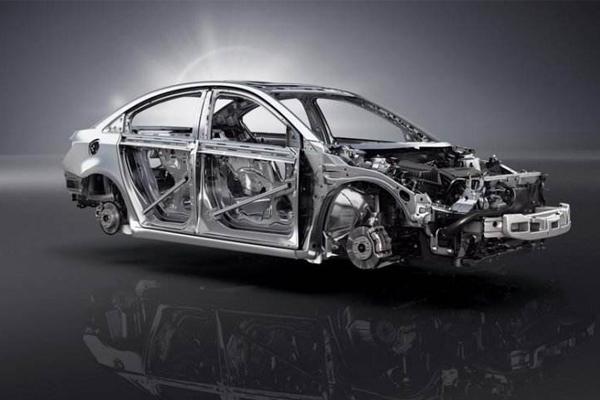
Auto body sheet metal fabrication involves a series of crucial steps, starting from design to the final product. The preliminary preparation phase is essential, encompassing design, material selection, process planning, and equipment readiness.
The process begins with detailed design documentation created using CAD software. Engineers draft 2D or 3D schematics specifying dimensions, shapes, and relative positions of components while considering manufacturability and technical challenges.
Material selection directly impacts product quality. Common materials include steel, aluminum, and composites, chosen based on performance requirements and environmental conditions.
Once the design and materials are confirmed, the fabrication process is planned, outlining processing steps, necessary equipment, and parameters to ensure efficiency and quality.
Fabrication involves various machinery, such as shears, bending machines, punching presses, laser cutters, and welding equipment. These machines must be calibrated and maintained to ensure optimal performance.

Cutting transforms raw materials into required dimensions and shapes, employing different methods depending on material type and precision needs.
Shearing is a common method for straight-line cuts using a mechanical or hydraulic guillotine.
Using a press and die, punching efficiently produces intricate shapes in large quantities with high precision.
Laser cutting provides highly accurate and clean cuts, ideal for complex geometries but at a higher operational cost.
Plasma cutting is effective for thick metal sheets, offering speed but with a rougher finish.
A cold cutting process using high-pressure water and abrasives, suitable for materials sensitive to heat deformation.
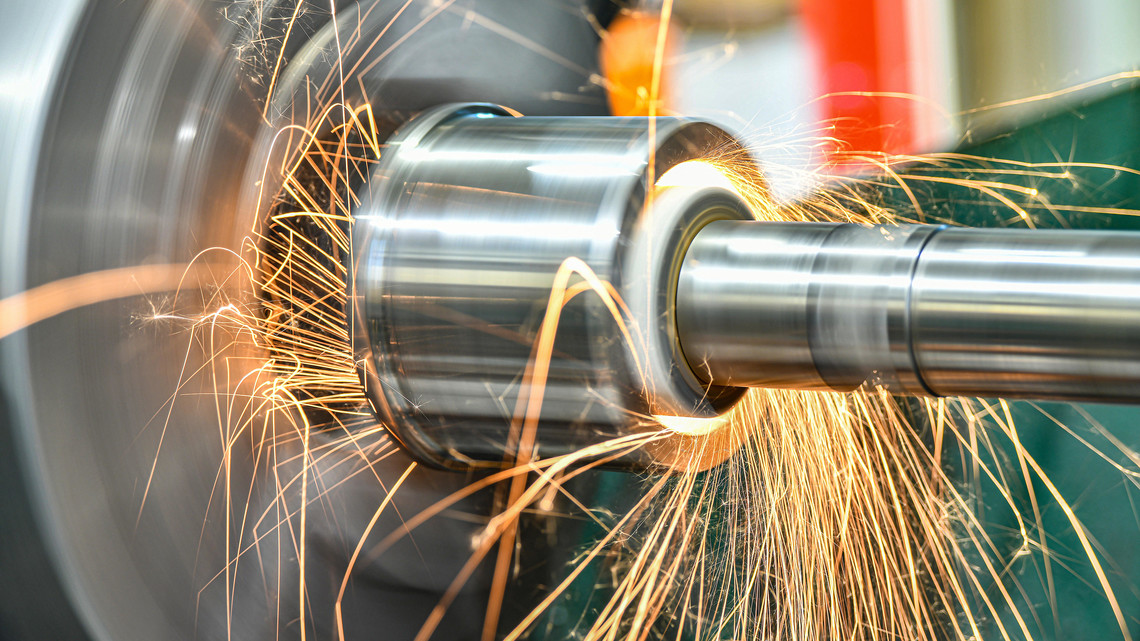
Forming transforms flat sheets into 3D structures using bending, stretching, stamping, and spinning.
Bending applies force to create angular deformations, performed using press brakes and dies.
Stretching shapes sheet metal over a die using a punch, commonly applied in automotive body panels.
Stamping uses dies and presses to create intricate forms and patterns in high-volume production.
Spinning is a rotational forming process used for cylindrical or conical parts, ensuring high material efficiency.
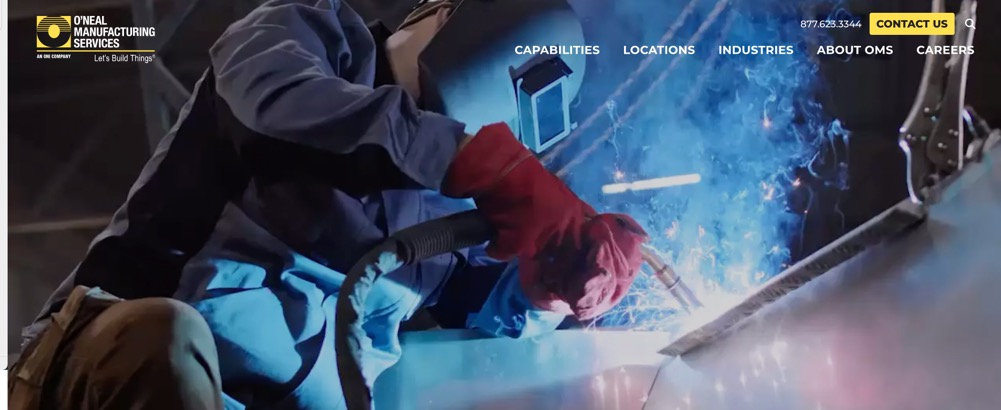
Joining multiple components into a single assembly is achieved through various techniques.
Welding, including arc, laser, and spot welding, provides strong and permanent bonds.
Riveting is ideal for dissimilar materials or where welding is unsuitable.
Bolted connections allow for easy disassembly and maintenance.
Adhesive bonding is useful for thin or heat-sensitive materials, offering a smooth and uniform joint.
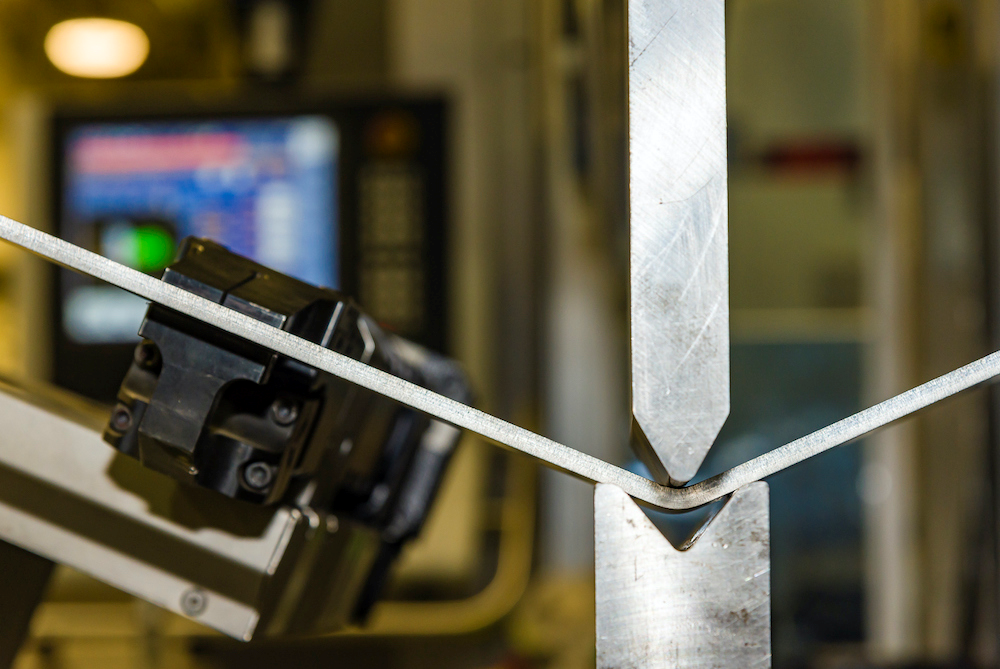
Surface treatments enhance appearance, durability, and corrosion resistance.
Paint coatings provide protection and aesthetic appeal but require maintenance.
Electroplating deposits a metal layer for corrosion resistance and enhanced strength.
Oxidation forms a protective layer on metals like aluminum through anodizing or chemical oxidation.
Powder coating applies a durable, corrosion-resistant layer using electrostatic attraction.
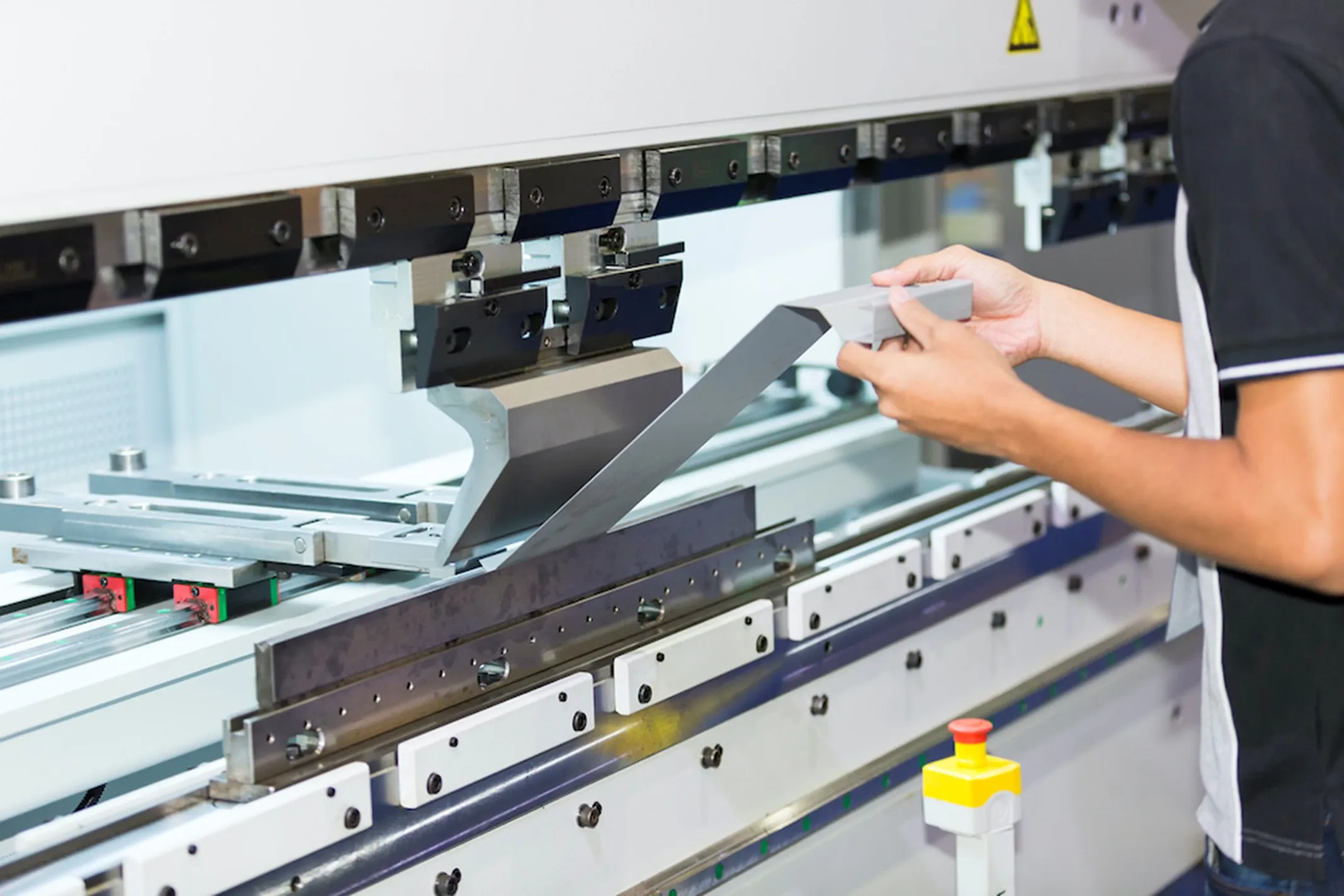
Quality control ensures products meet specifications and performance standards.
Precision measuring tools verify component dimensions and tolerances.
Visual and instrumental inspection detects surface defects such as scratches, dents, or coatings inconsistencies.
Mechanical testing assesses strength, flexibility, and impact resistance.
Non-destructive testing (NDT), such as X-ray and ultrasonic inspection, ensures joint integrity.
By following this structured process, auto body sheet metal fabrication achieves high-quality, reliable components for various applications.

Auto body sheet metal fabrication is an essential process for vehicle repair, restoration, and customization. Choosing the right materials and fabrication techniques ensures durability, safety, and aesthetics. Whether you’re repairing a damaged panel or building a custom vehicle, professional fabrication services deliver exceptional results.
Need expert auto body sheet metal fabrication? Contact Shengwo today for high-quality, precision-crafted solutions!